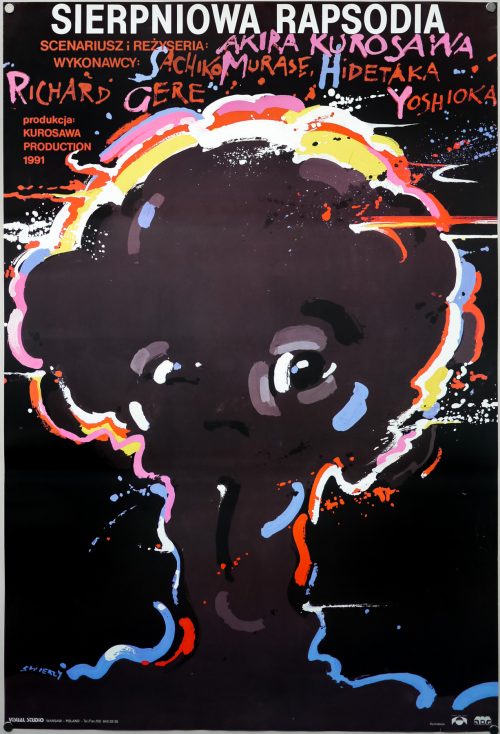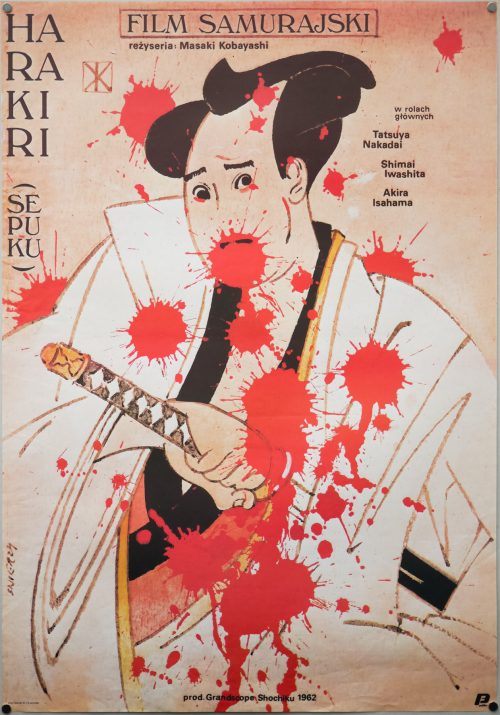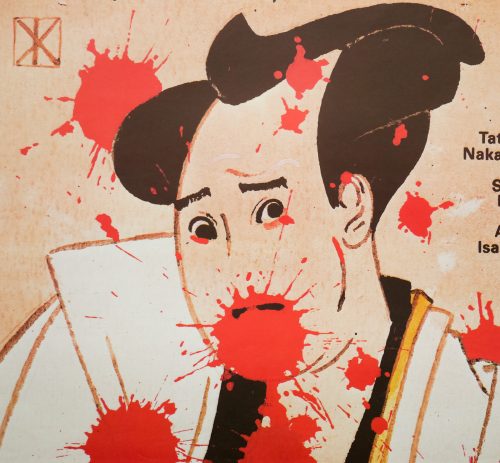- Title
- Rhapsody in August
- AKA
- Hachi-gatsu no kyôshikyoku (Japan - original title)
- Year of Film
- 1991
- Director
- Akira Kurosawa
- Starring
- Sachiko Murase, Hisashi Igawa, Narumi Kayashima, Tomoko Ôtakara, Mitsunori Isaki, Toshie Negishi, Chôichirô Kawarasaki, Mieko Suzuki, Richard Gere
- Origin of Film
- Japan
- Genre(s) of Film
- Sachiko Murase, Hisashi Igawa, Narumi Kayashima, Tomoko Ôtakara, Mitsunori Isaki, Toshie Negishi, Chôichirô Kawarasaki, Mieko Suzuki, Richard Gere,
- Type of Poster
- B1
- Style of Poster
- --
- Origin of Poster
- Poland
- Year of Poster
- 1993
- Designer
- Waldemar Świerzy
- Artist
- Waldemar Świerzy
- Size (inches)
- 26 6/16" x 38 13/16"
- SS or DS
- SS
- Tagline
- --
A striking design by the celebrated Polish artist and designer Waldemar Świerzy features on this Polish B1 poster for the release of the Japanese director Akira Kurosawa‘s penultimate film, Rhapsody in August. The story focuses on three generations of a Japanese family who were affected by the 1945 Nagasaki atomic bomb. Kane (Sachiko Murase) is the grandmother of the family who lost her husband to the explosion and she is tasked with looking after her four grandchildren for the summer, whilst her children visit a man who claims to be Kane’s long-lost brother in Hawaii. The children learn about the effects of the bomb and what it meant for their family. Richard Gere appears as Clark, an American-born cousin of Kane’s children, who gets involved in a ceremony to commemorate the bombing.
The late Waldemar Świerzy is considered to be one of the most important Polish designers and artists and it’s estimated he’s worked on over 2500 posters during his career. He was born in Katowice in 1931 and graduated from the Kraków Academy of Fine Arts in 1952. He later became professor in the University of Fine Arts in Poznań from 1965 and Professor in the Academy of Fine Arts in Warsaw in 1994. The artist was one of the key figures in the influential Polish School of Posters a movement to push the level of quality of Polish posters forward which was active for over 30 years, starting in the 1950s. Świerzy won multiple awards during his career and had several exhibitions of his work held over the years. He sadly passed away in 2003.
Polishposter.com has several pages of his work and this biography on culture.pl goes into great detail about his life and work. Poster.com.pl has another gallery of his work.
























